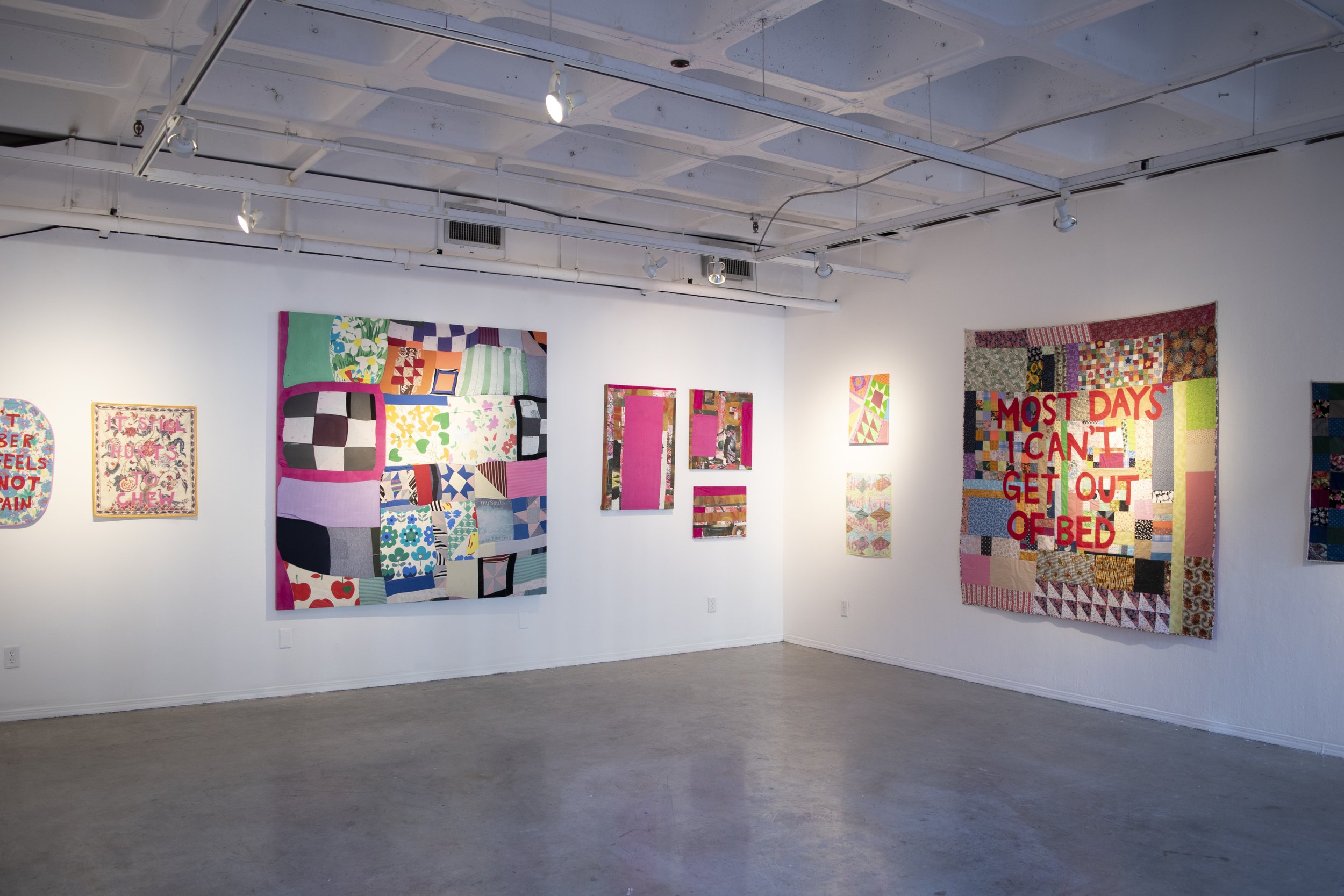Rage Quilts/Jessica Rimes and May Jones/
2.23.2024 - 3.19.2024
01- Artist Statements
Jessica Rimes
Jessica Rimes focuses on quilting as a form of feminine identity, and the experiences women face in a world that rewards burnout culture. Quilts are a domestic object that are expected to be soft and comforting, as well as an object of beauty. Their functionality often overshadows the rich history that they contain, as well as the monumental amount of time and effort it takes to create them. Women also deal with similar expectations daily. They are expected to do it all; live up to societal beauty standards, have a successful career, and raise children, all while still having time for everything except for themselves.
In the past, quilting and other domestic fiber-based crafts were often the only activities where a woman was capable of showing self-expression and where her work and dedication had permanence. Quilting was also a communal practice; not only were fabrics from clothing traded amongst family members to make quilts but they were also made of clothing from lost loved ones as a way to immortalize them. Similarly to this, Jessica works with found and gifted fabrics such as clothing scraps and cotton remnants. By using these types of materials Jessica acknowledges the communal and memorializing qualities that makes quilting unique and contemporary.
02 - Exhibition Statement
May Jones
May Jones’s work aims to document and share her experiences with the medical system through the idea of comfort and care. She suffers from Chronic Lyme Disease, which has led her to have countless disappointing doctor appointments and numerous instances of medical gaslighting. After all of the negative experiences she has undergone, she has been left with permanent damage (both from the untreated Lyme Disease and from the trauma caused by these interactions.) Unfortunately, these experiences are not only unique to her, so her goal is to share her stories in an attempt to create a voice for those who are unable to advocate for themselves and to share the truth about how we are being treated.
I find that quilting is an ideal medium to address these problems because it is an object of warmth and care, and is associated with the rest and the home. It is also a tedious and time-consuming craft that is often made with love. By using colorful, kitschy, fabrics that clash and contrast with each other, she is transforming difficult experiences into loud and bright objects of comfort and protest. Her quilted works act as a reminder to herself and others that your symptoms and your illness are real and valid, and that you deserve to be loved, cared for, and most importantly, believed.
Quilting is a versatile craft that is historically rooted in self-expression, protest, and memorialization. Traditionally, quilting is thought to be a feminine practice and has been made in the home. Quilting requires relatively inexpensive materials and no formal training which keeps the practice accessible to community members and individuals of all backgrounds. Because of these traits, quilts are an ideal vehicle to support our individual messages of feminism and chronic illness advocacy. We often say that our quilts are “made with rage”. This supports both of our concepts because we believe that anger is a catalyst for advocacy and change.









